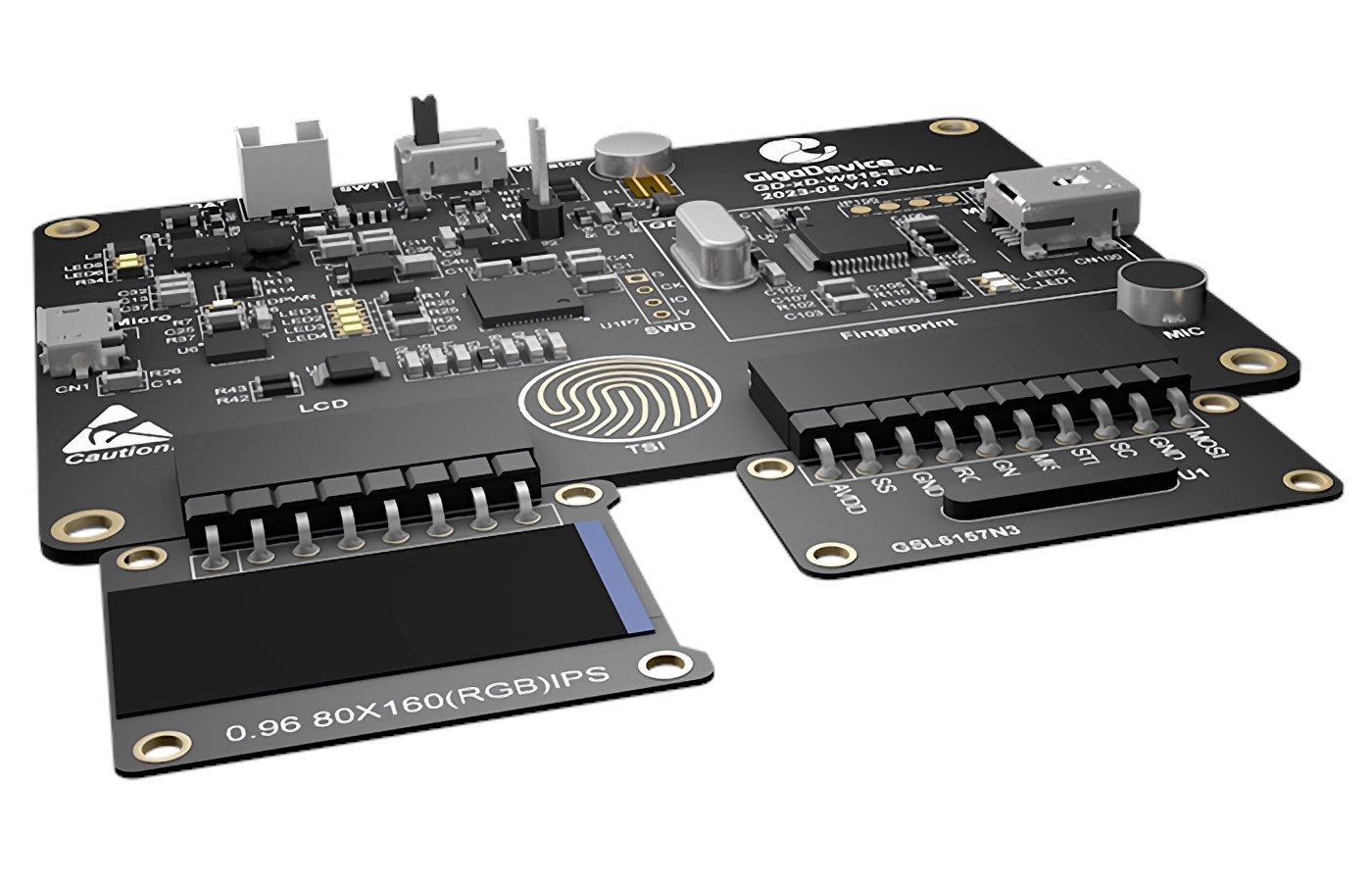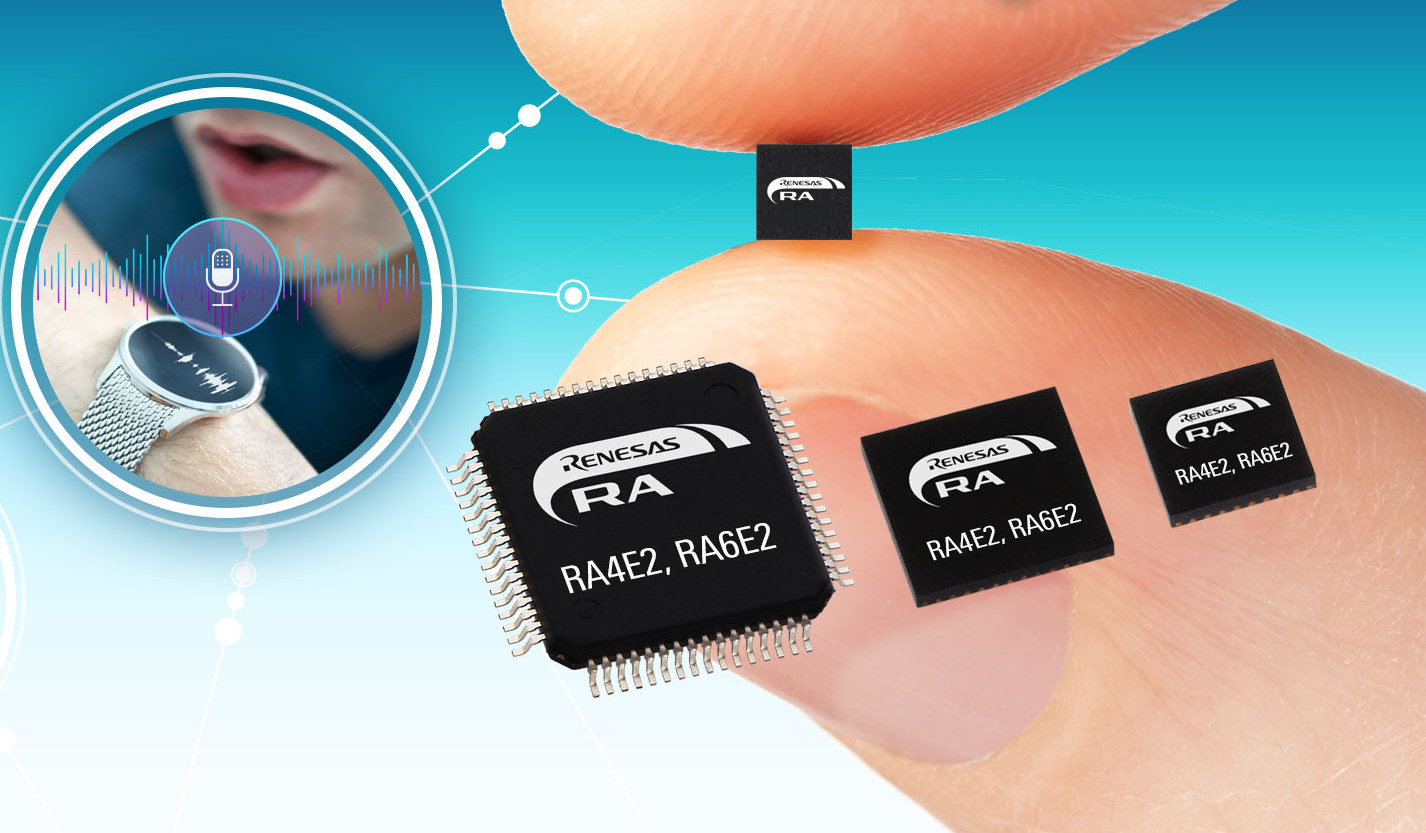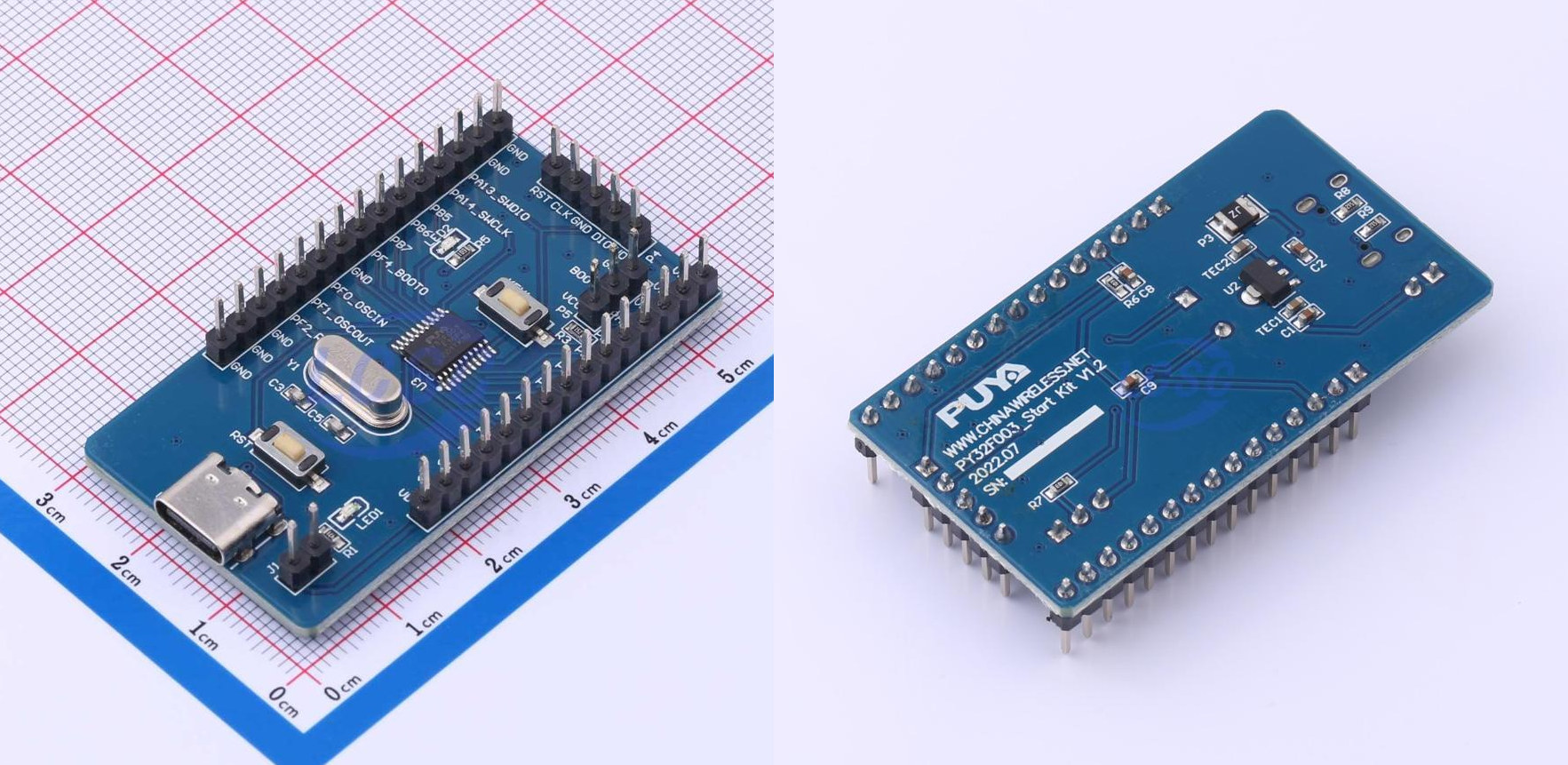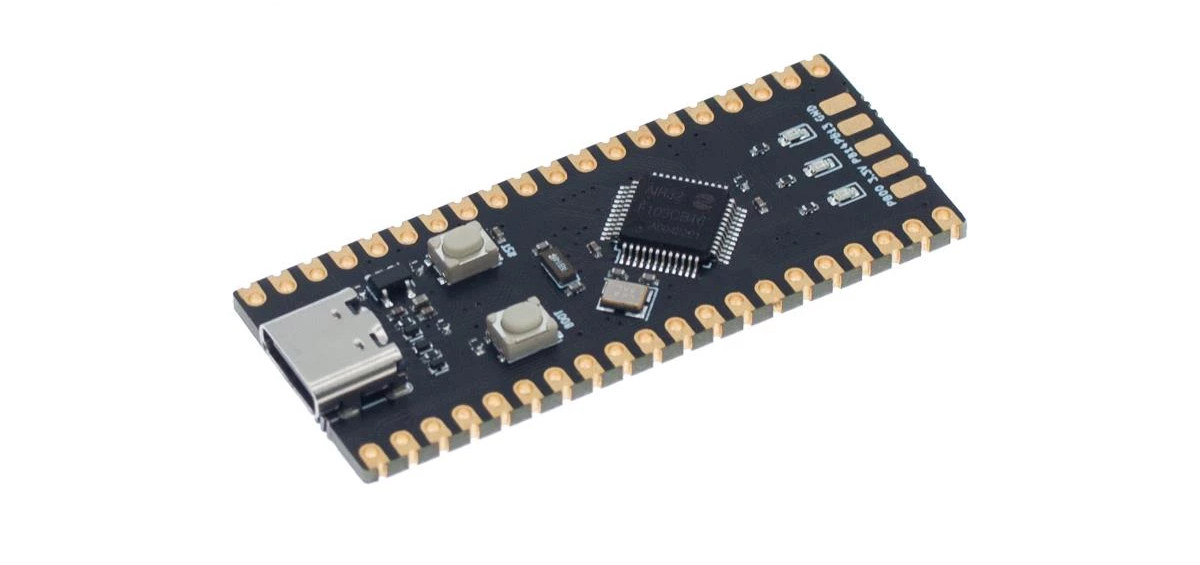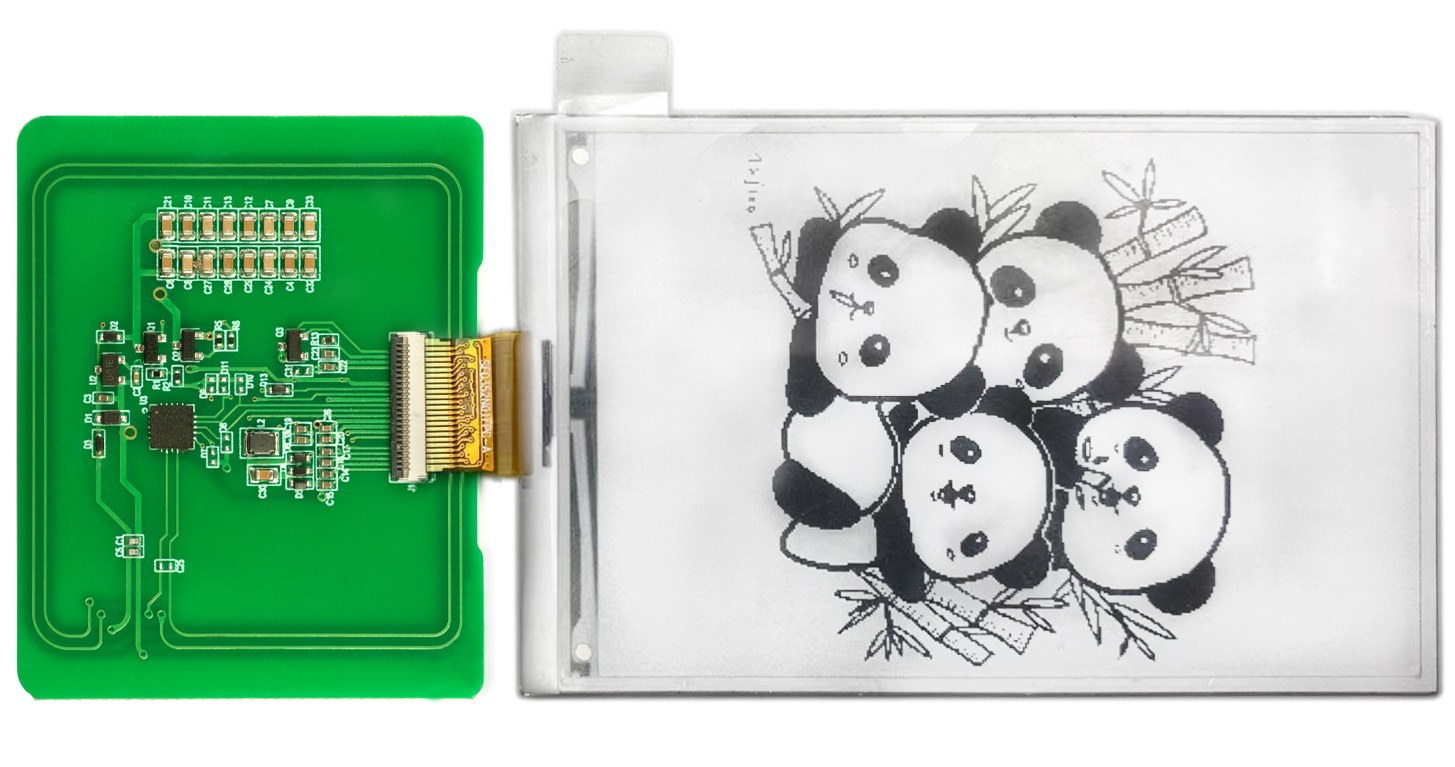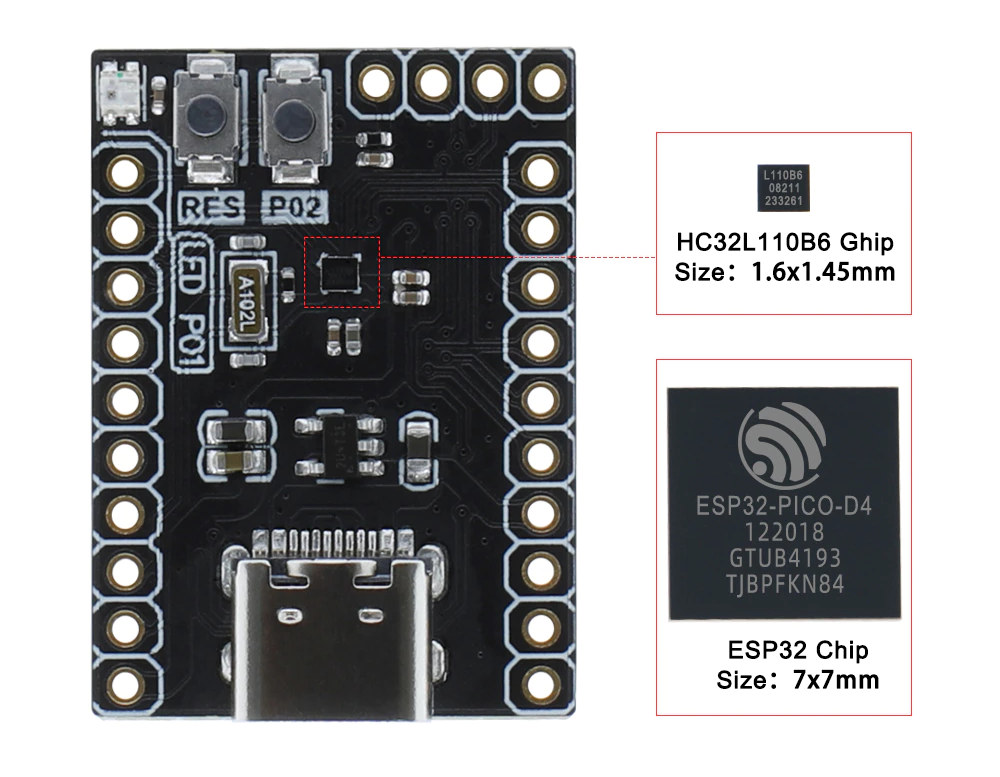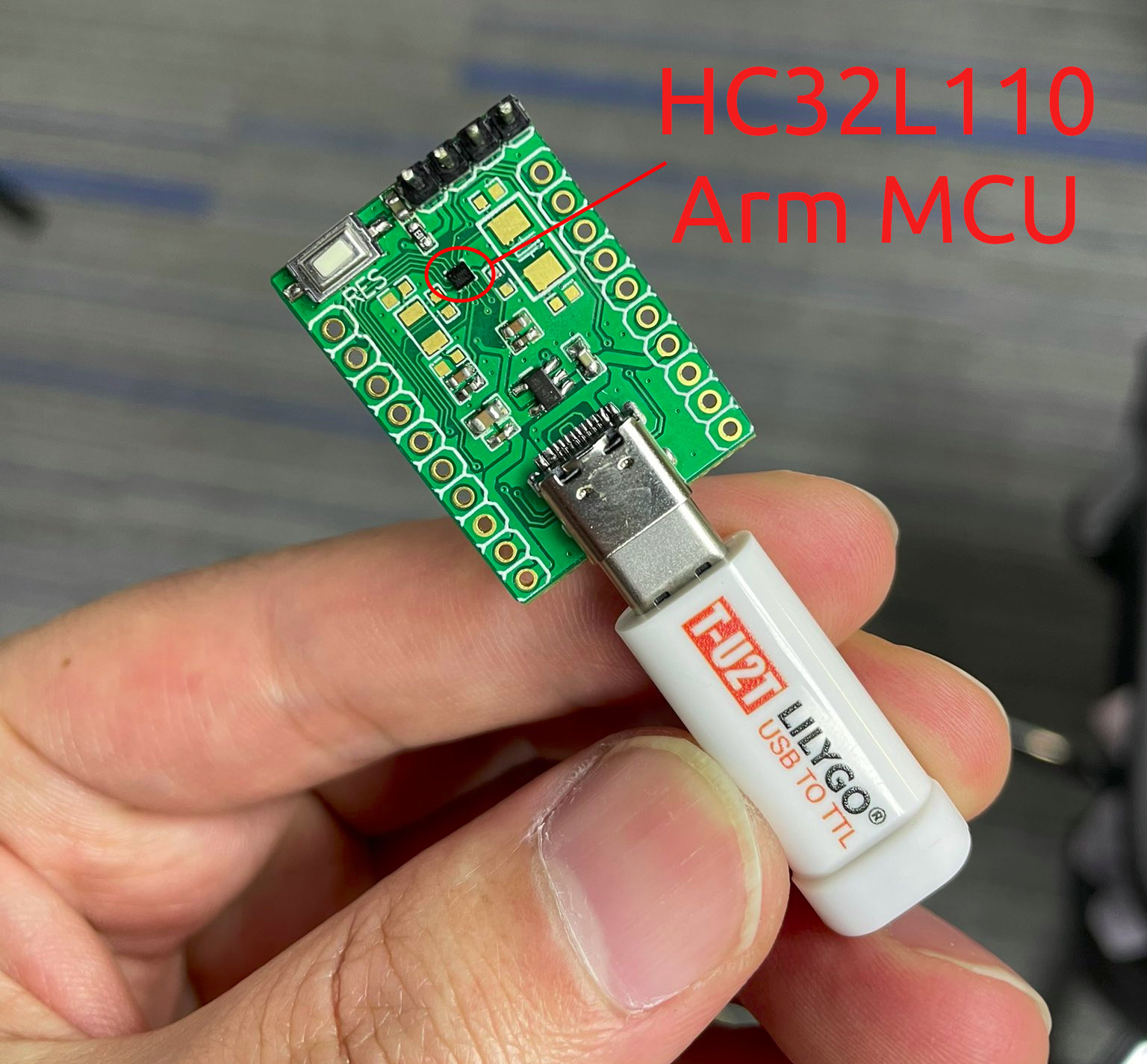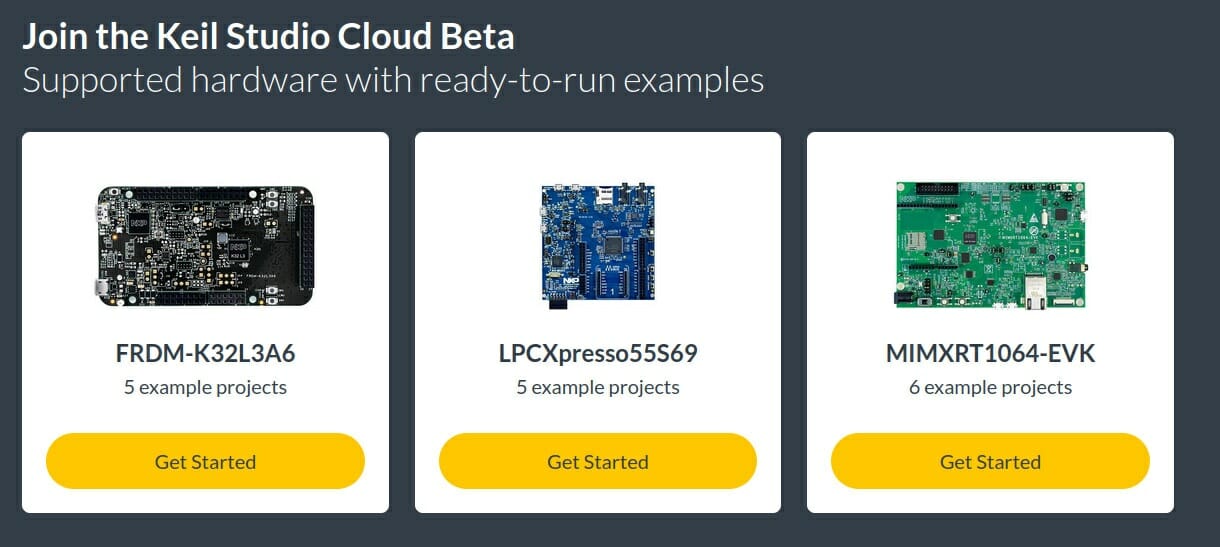GigaDevice GD-xD-W515-EVAL is a new “all-in-one” Cortex-M33 evaluation kit comprised of a GD32W515 mainboard, a fingerprint board, and an LCD board powered by either a battery or the Mini-USB interface of the GD-Link programmer. The devkit is mainly used to evaluate various chips from the company, namely the 180 MHz GD32W515PIQ6 Cortex-M33 microcontroller, the GD25Q128E SPI NOR flash, the GSL6157 capacitive fingerprint Sensor, the GD30BC2416 battery management IC, and the GD30LD1002 power management chip. GigaDevice GD-xD-W515-EVAL board specifications: MCU – Gigadevice GD32W515PIQ6 Core – Arm Cortex-M33 microcontroller clocked at up to 180 MHz with Arm TrustZone support Memory – 448KB SRAM Storage – 2048KB flash Wireless – 2.4 GHz WiFi 4 (802.11b/g/n), but somehow not used in the development board… I/Os – Up to 43x GPIOs, 3x USART, 2x I2C, 2x SPI, USB 2.0 FS, I2S, etc… Package – QFN56 Storage – 128Mbit SPI NOR Flash (GD25Q128E) Display – 0.96-inch […]
Renesas introduces 100 MHz RA4E2 and 200 MHz RA6E2 Arm Cortex-M33 MCUs for wearables, sensors, appliances
Renesas Electronics has added two new groups to its 32-bit RA family of microcontrollers (MCUs) with the 100 MHz RA4E2 and 200 MHz RA6E2 Arm Cortex-M33 microcontrollers designed for “high-performance applications” in small packages such as sensing, gaming, wearables, and appliances. The new microcontrollers are equipped with 40 KB SRAM, 128 KB or 256 KB flash, and integrate various on-chip interfaces such as CAN FD, USB, QSPI, SSI, and I3C interfaces to offer an easy upgrade path for products based on other members of the Renesas RA Family. Renesas RA4E2 MCU group Both the RA4E2 and the RA6E2 are the most cost-effective microcontroller groups of the RA family with integrated CAN FD, with the RA4E2 group especially well-suited to cost-sensitive applications and other systems requiring relatively high performance, low power consumption, and/or small package size. RA4E2 key features: CPU – Arm Cortex-M33 core with TrustZone @ up to 100 MHz […]
Meet Puya PY32 – The 8-cent Arm Cortex-M0+ microcontroller
Puya Semiconductor (Shanghai) PY32 Arm Cortex-M0+ microcontroller family may be the world’s cheapest 32-bit Arm MCUs with one of the parts – PY32F002AL15S6TU – selling for under 8 cents per unit in 5K+ orders with 3KB SRAM, 20KB flash in an 8-pin SOP-8 package. Back in 2016, when I searched for the world’s cheapest MCU, I found Holtek HT48R002 8-bit microcontroller, and a few years later (2019), Padauk PMS150C “3 Cents” MCU came to my attention. However, both are 8-bit microcontrollers that come with OTG (One-Time Programming) ROM, meaning they can’t be easily used for development or updated. The Puya PY32 microcontrollers are in the same price range but offer a 32-bit Arm Cortex-M0+ core clocked at 24 to 48MHz, 16KB to 64KB flash storage, and 2KB to 8KB SRAM. There are three PY32 sub-families, but let’s check out the PY32F002 family in detail since those are the cheapest parts. […]
Air32F103 is a clone of STM32F103 clocked at up to 216 MHz
Air32F103 is yet another clone of the STM32F103 microcontroller that can be faster if needed with a clock of up to 216 MHz instead of 72 MHz for the original STMicro STM32 Arm Cortex-M3 microcontroller. The first SKU of the family is the Air32F103CBT6 whose peripherals and hardware design are compatible with equivalent STM32F103CBT6 parts and offered with 32KB RAM and 128KB flash. There’s also a Bluepill-like development board, but with a different pinout, made by LuatOS. Documentation for the board and microcontroller can be found in a Wiki including the MCU datasheet that indicates models with 256KB flash and 64KB SRAM (Air32F103CCT6) and 96KB SRAM (Air32F103RPT6). Since the wiki is in Chinese only, you may want to head over a post in English on Chowdera to learn how to get started with the Keil IDE using code hosted on Gitee. The chip and board were also spotted on EEVBlog […]
HiPo batteryless NFC-powered 3.52-inch e-Paper display also comes with an SPI interface (Crowdfunding)
HiPo is a 3.52-inch black and white e-Paper Display that can be updated through NFC without the need for external power and offers an alternative to the 4.2-inch and 7.5-inch NFC-powered e-Paper displays from Wareshare that also operate without battery only using the data and power from NFC to update the image. Alternatively, Guangdong SID Technology’s HiPo display can also be connected to an SPI adapter board allowing the users to connect it to an STM32 board provided by the company, but it could also be used with Arduino boards, ESP8266 & ESP32 hardware platforms, Raspberry Pi SBCs and MCU boards, or any platform with an SPI interface. HiPo specifications: Controller – Ultrachip UC8251 all-in-one driver IC with timing controller for E-tag applications Display 3.52-inch B&W e-Paper display with 360 x 240 resolution (model name: SE0352N01-MNG-A0) 3 seconds refresh time On-chip display RAM White reflectance above 30% Contrast ratio above […]
LilyGO T-HC32 board with the world’s smallest Arm MCU (HC32L110B6) is now available for $9
HC32L110 Arm Cortex-M0+ MCU is found in a minuscule 1.59 x 1.436 mm CSP16 package that should make it the world’s smallest Arm MCU. LilyGO T-HC32 is one of the first boards with the HC32L110B6 microcontroller, and it is now available for $8.98 on Aliexpress including shipping. The board offers really basic features with two buttons, a WS2812 RGB LED, and two-row of ten pins each for GPIOs and power signals, plus a 4-pin header for SWD programming. There’s nothing really special about the board or its price, except for the MCU’s size that’s barely discernable from a discrete component, and much smaller than the 7x7mm ESP32-PICO-D4 system-in-package shown in the photo below for comparison. LilyGO T-HC32 board specifications: MCU – HDSC HC32L110B6 Arm Cortex-M0+ @ up to 32 MHz with up to 4KB RAM, up to 32KB flash memory Expansion – 2x 10-pin header with GPIO, UART, I2C, […]
HC32L110 Arm Cortex-M0+ MCU is available in a tiny 1.59 x 1.436 mm CSP16 package
Before you ask… No, it’s not another one of those CNXSoft’s typos, I did not mean to write cm (centimeters), and HDSC HC32L110 is indeed an Arm Cortex-M0+ microcontroller available in an almost microscopic 1.59 x 1.436 mm CSP16 package, which could make it the world’s smallest Arm MCU. I discovered the microcontroller when LilyGO shared a small board only showing the MCU’s dimensions and CSP16 type. Silicon Labs EFM8SB10F8G-CSP16 showed first in a web search, but that’s an 8-bit 8051 microcontroller with a 1.781 x 1.659 mm CSP16 package, and it’s unlikely they’d use a “Western” microcontroller. But I soon found the microcontroller on Huada Semiconductor Co. Ltd (HDSC) website. HC32L110 specifications: MCU core – Arm Cortex-M0+ 32-bit core @ up to 32 MHz Memory – 2KB to 4KB RAM memory with parity check Storage – 16K to 32KB flash memory with erase and write protection Peripherals 16x GPIOs […]
Arm introduces Open-CMSIS-Pack and Keil Studio Cloud for MCU software development
Arm has just announced two new initiatives that aim to boost the productivity embedded, IoT, ML, and MCU software developers: the Open-CMSIS-Pack project and Keil Studio Cloud. The Open-CMSIS-Pack Project The Cortex Microcontroller Software Interface Standard (CMSIS) packs have been around for years providing a vendor-independent hardware abstraction layer for microcontrollers, mostly Cortex-M based, but others too, and currently support close to 9000 different microcontrollers. I always assumed CMSIS was open-source as the source code is available in Github under an Apache 2.0 license. But apparently, not all components are, and Arm has now announced the Open-CMSIS-Pack project that will move part of CMSIS into the open project in collaboration with the Linaro IoT and Embedded Group. Linaro, Arm, and other partners like STMicro and NXP will initially focus their work on command-line tools and CMake workflows, with the ultimate goal of making the CMSIS-Pack technology into a true open […]


